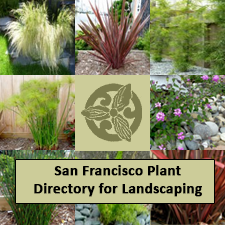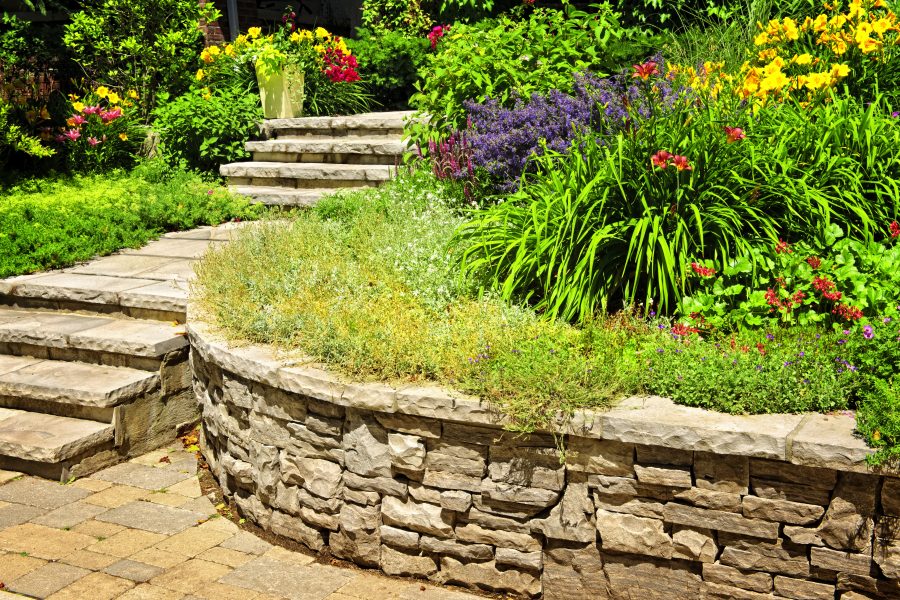
Have you ever planted something in what looked like fabulously rich ground, only to find a sickly-looking sample later? What happened? Why did it die? And what does this have to do with planting a retaining wall?
How Retaining Walls Affect Your Soil’s “Plantability”
What plants you use depends on where you plant them and the condition of the soil, but that’s not all. Environment – the area surrounding the planting space – is also something that needs to be taken into consideration.
Retaining walls serve a wonderful purpose. When constructed properly, they don’t just serve to hold soil in place, but they also help channel water to stop erosion. They’re made out of materials that help with these two purposes, and those materials create a specialized planting zone around the wall. Here are two big ways retaining walls affect the type of plants you can use.
The PH “Curse”
A lot of retaining walls use drainage gravel and some type of concrete. The materials used to create the walls are usually highly alkaline, which leaches into the soil creating equally high alkalinity where you’re going to plant. For plants that need a low PH, higher alkalinity means starvation, since it stops them from being able to absorb nutrients from the soil.
Lowering Your Soil’s PH
If you choose to lower your soil’s PH instead of working with alkaline-loving plants, you can add materials to the soil. The pro of this method is that you can plant what you want. The con is that it means more regular maintenance for you.
The best way to lower your PH is by adding organic matter. Organic matter can include compost from your kitchen, composted manure, and acidic mulches such as pine bark, cypress and pine straw. The added benefit of using this method is that the organic matter will improve aeration and drainage as it decomposes.
Alkaline-loving plants
If maintenance isn’t your bag, the best option is to choose plants that find the conditions behind the retaining wall to be supreme. Thankfully, there are plenty of beautiful, ornamental plants and bushes to choose from:
Water Retention
Part of the design of retaining walls is the redistribution of water so it doesn’t weaken the wall. This means the backfill is often mixed with gravel, which creates an area that is fast draining and shallow. In other words, it’s a self-imposed drought zone.
You can’t add to the soil to decrease the drainage, or you’ll have wear and tear on the retainer, so what can you do about it? Simply this: use drought-tolerant plants. Not only does this mean a less expensive water bill, but it also means maintenance is barely a thing.
Drought-tolerant Plants
When you think of drought-tolerant plants, your mind might automatically go to succulents. Maybe your inner vision of your terraced backyard involves cacti, succulents, sagebrush and multi-variants of sedge. But there’s more to choose from than those (although there’s nothing wrong with a nice dark green burst of Catlin sedge). Options include:
- Cordyline “Electric Pink” (one of my favorites)
- Winter Daphne – excellent for retaining walls, needing very little water and a porous soil
- African Iris – white perennial with a purple top and bright yellow accents
- Blood Red Trumpet Vine – beautiful red bursts of color, but it will need a trellis or some sort of support
- Helianthemum ‘Apricot’ and Helianthemum ‘Belgravia Rose’ – evergreen shrubs that produce apricot and rose-colored blooms respectively
These are just a few. You can find a large list of drought-tolerant plants native to San Francisco on the San Francisco Public Works website.
Plant Your Retaining Wall
Don’t get discouraged; you can have a planted retaining wall without sacrificing on variety or color. You just have to know what you’re dealing with before you jump in and find yourself frustrated with dead or dying plants. Choosing the right plants for the right space is part of the art – and joy – of gardening.
If you need help in integrating a retaining wall into your garden design, contact Tamate Landscaping, one of the top landscaping contractors in San Francisco. We specialize in creating beautiful outdoor living spaces that you can enjoy all year ‘round.



